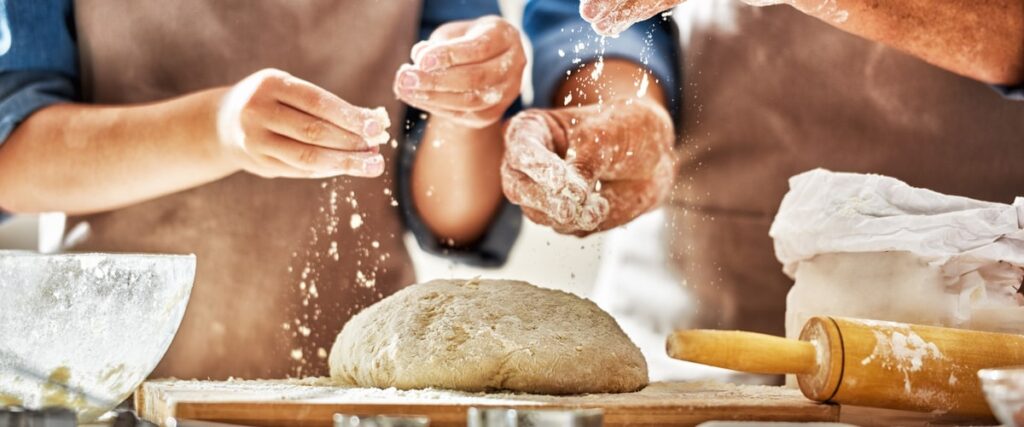Baking is both an art and a science, requiring precision, patience, and creativity. Whether you are a beginner or an experienced baker, mastering essential techniques can make a significant difference in your final results. From understanding ingredient interactions to using the right tools, perfect baking is achievable with the right guidance.
In this article, we’ll explore expert tips to help you enhance your baking skills and achieve mouthwatering desserts every time.
Understanding the Basics of Baking

Importance of Precise Measurements
Baking is all about chemistry, meaning precise ingredient measurements are crucial. Unlike cooking, where you can adjust flavors as you go, baking requires exact ratios to achieve the right texture and consistency. Always use measuring cups and spoons for accuracy.
Choosing the Right Ingredients
The quality of ingredients affects the outcome of baked goods. Use fresh ingredients, such as high-quality butter, fresh eggs, and unexpired baking powder or yeast. Experimenting with different brands of flour, chocolate, and dairy can also impact the final taste.
Role of Temperature and Timing
- Ingredients should be at room temperature unless otherwise specified. Cold butter can affect dough consistency, while warm eggs mix better into batters.
- Preheating the oven ensures even baking, preventing undercooked or overbaked desserts.
- Follow recipe timing instructions carefully and avoid opening the oven frequently, as heat loss can affect results.
Essential Baking Equipment
Must-Have Tools for Beginners
Having the right equipment makes baking more efficient and enjoyable. Essential baking tools include:
- Measuring cups and spoons
- Digital kitchen scale
- Mixing bowls
- Whisk, spatula, and pastry brush
- Rolling pin
- Baking sheets and cake pans
- Wire cooling racks
Importance of Using Quality Bakeware
Investing in high-quality bakeware can improve baking results. Non-stick pans, silicone mats, and heavy-duty baking sheets help ensure even cooking and prevent sticking.
How to Maintain Baking Tools for Longevity
Proper maintenance extends the life of your baking tools. Clean non-stick pans with mild soap, avoid using metal utensils on them, and store ingredients properly to prevent spoilage.
Common Baking Mistakes and How to Avoid Them
Overmixing and Undermixing
Overmixing can lead to dense cakes and tough cookies, while undermixing can cause uneven textures. Mix until just combined to maintain the right consistency.
Incorrect Oven Temperature
An oven thermometer helps ensure accurate temperature settings, as some ovens may run hotter or cooler than the set temperature. Always preheat before baking.
Using the Wrong Flour or Leavening Agent
Different flours absorb liquid differently, affecting texture. Use the flour specified in the recipe, and ensure leavening agents (baking powder, baking soda) are fresh for proper rising.
Secrets to Perfect Cake Baking
How to Achieve a Soft, Moist Texture
- Use the right balance of wet and dry ingredients.
- Avoid overbaking by checking for doneness with a toothpick.
- Let cakes cool in the pan for a few minutes before transferring them to a wire rack.
Proper Mixing Techniques
Cream butter and sugar together for a light texture, and fold in dry ingredients gently to avoid deflating the batter.
Best Way to Cool and Store Cakes
Let cakes cool completely before frosting to prevent melting. Store in an airtight container at room temperature or refrigerate for longer freshness.
The Art of Baking Cookies and Biscuits
How to Get the Perfect Chewy or Crispy Texture
- For chewy cookies, use more brown sugar and bake at a lower temperature.
- For crispy cookies, use more granulated sugar and bake slightly longer.
Using the Right Fat (Butter vs. Shortening)
- Butter provides rich flavor but can cause cookies to spread more.
- Shortening gives cookies a firmer texture and helps maintain shape.
Avoiding Spread and Flattening Issues
Chill dough before baking to prevent excessive spreading. Use parchment paper for even baking and easy removal.
Bread Baking for Beginners
Understanding Yeast and Fermentation
- Use warm (not hot) water to activate yeast.
- Let dough rise in a warm, draft-free place for proper fermentation.
Kneading and Proofing Techniques
- Knead dough until it becomes smooth and elastic.
- Allow proper proofing time to develop flavor and texture.
Tips for Achieving a Golden Crust
Brush bread with egg wash or milk before baking to enhance browning. Steam in the oven can also improve crust formation.
Perfecting Pastries and Pies
How to Make Flaky Pastry
Use cold butter and handle the dough minimally to create a flaky texture. Chilling the dough before rolling also helps.
Avoiding a Soggy Bottom
- Pre-bake (blind bake) pie crusts when making custard fillings.
- Use a metal or glass pie pan for better heat conduction.
Best Fillings for Different Occasions
- Fresh fruit for summer pies
- Pumpkin and spiced apple for fall desserts
- Chocolate and custard for year-round indulgence
Baking Tips for Beginners: Key Takeaways
- Measure ingredients accurately for the best results.
- Preheat your oven and maintain the right temperature.
- Use high-quality ingredients and bakeware.
- Avoid common mistakes like overmixing or underbaking.
- Practice different techniques and experiment with flavors.
Conclusion
Perfecting the art of baking takes patience, practice, and attention to detail. By following these tips, you can elevate your baking skills and create delicious desserts with confidence. Whether you’re making cakes, cookies, bread, or pastries, the key is to understand the science behind baking while embracing creativity.
For more baking tips and delicious recipes, visit IndianFoodGuide and start your baking journey today. If you’re looking for more culinary inspiration, check out Kings XI for exciting food-related content and expert insights.